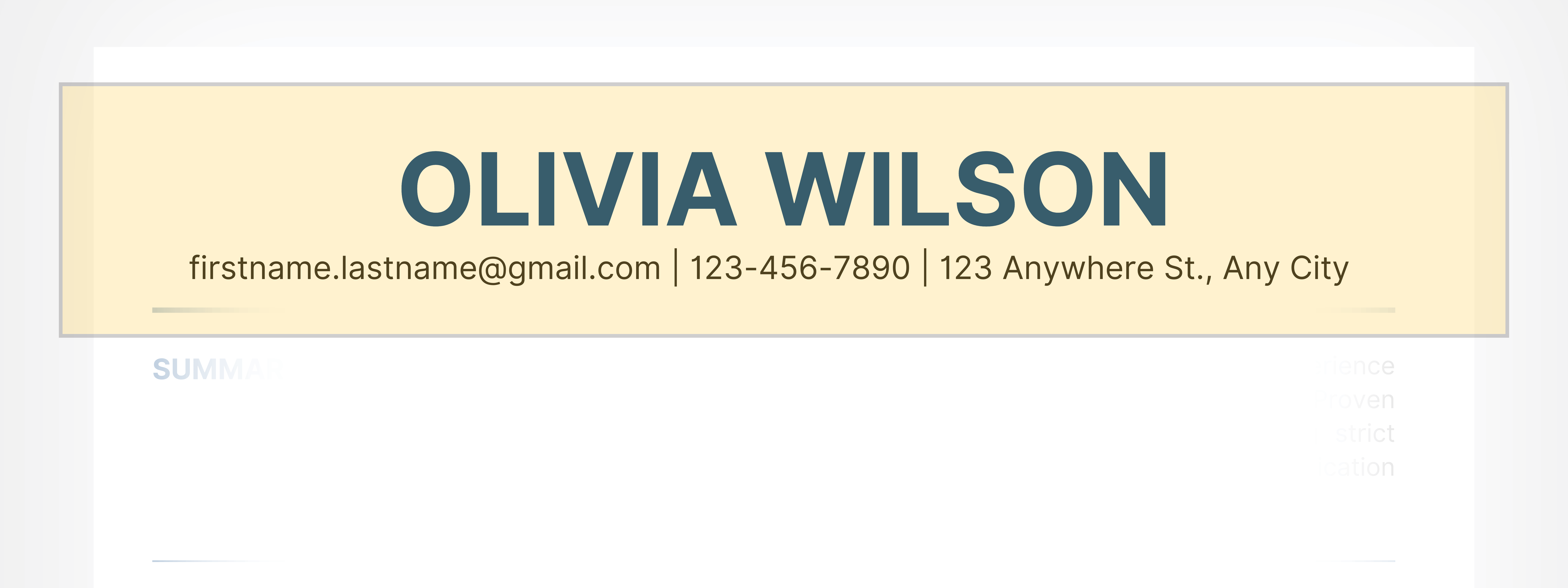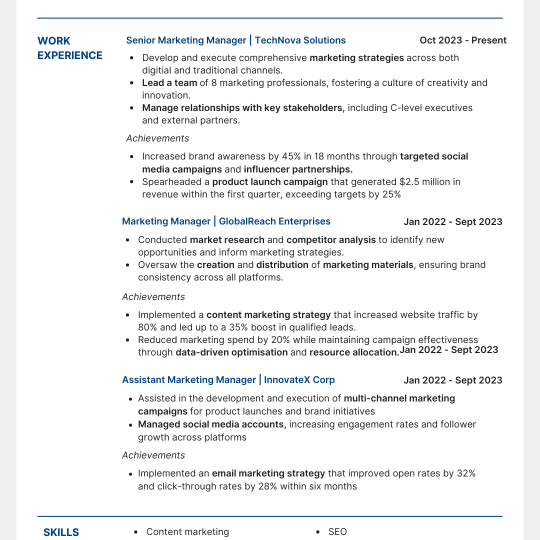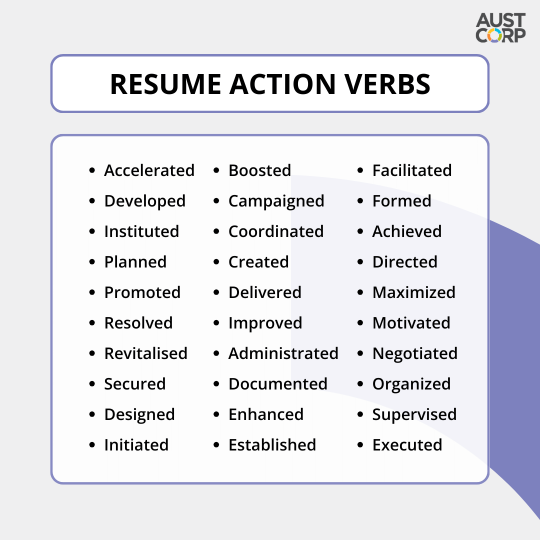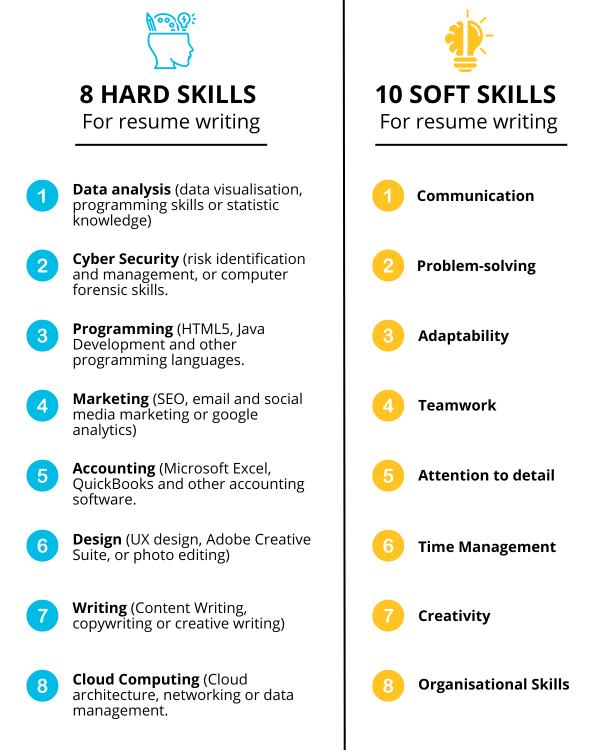
Resume Writing: A Step-by-Step Guide to Writing a Resume that stands out
In today's cutthroat job market, your resume is often your only shot at making a memorable impression with the hiring manager. With recruiters spending mere seconds on each application, writing a stand-out resume is more crucial than ever.
But where do you start? How do you distil years of experience into a single, compelling document?
Don't worry – we've got you covered. Our step-by-step guide to resume writing will walk you through the process of creating a powerful, attention-grabbing resume that showcases your unique skills and qualifications. From avoiding common pitfalls to highlighting your most impressive achievements, we'll show you how to make every word count.
Get ready to transform your job search and create a resume that not only catches the eye but also compels hiring managers to take action.
Why is an effective resume so important?
In today's competitive job market, crafting a high-quality resume is paramount to standing out and securing your ideal position. Your resume is a powerful marketing tool, offering a concise yet compelling narrative of your professional journey. With studies showing that a well-written resume can increase your chances of landing an interview by up to 40%, it is crucial to make every word count.
On average, potential employers spend just 7.4 seconds reviewing a resume due to the many applications they receive. A well-crafted resume and, more specifically, a resume summary can capture the hiring manager/recruiters' eye, compelling them to keep reading, especially if they see work experience and skills that align with the job description.
A well-tailored resume perfectly highlights your eligibility and qualifications to the job you are applying for, enabling hiring managers to determine if you are a good fit for the position.
Many companies use ATS software to screen resumes before a human recruiter sees them. An effective resume includes relevant keywords and formatting that can help you pass through these systems and reach the hands of a human reviewer.
Resumes are helpful not only when applying for advertised job openings but also when networking. Sharing your resume with contacts in your industry can lead to job referrals or other opportunities.
Tailoring your resume to the role
First things first: Don't send the same resume to every job. You can start with a basic resume showcasing your essential qualifications, but you should customise it for each job opportunity. Here's why:
You want to demonstrate to the employer that you understand the requirements of the specific job.
You don't want to rely on the reader to extrapolate your fitness for the role – you want to do that for them.
Consider what a recruiter or potential employer is looking for when they review a CV. They aren't just checking that you fit the basic requirements for the role, they are trying to gauge whether your skills and experience makes you a good fit for the role. The closer your CV fits with the culture and characteristics of the company, the better your chance of standing out from the crowd.
How can you tailor your resume to suit the role you are applying for? Here are some general tips to consider:
Look for keywords and phrases: Review the job description and highlight the typical keywords and phrases. List these on a separate piece of paper, grouping them into the following categories: soft skills, technical/hard skills, and job experience). This will make it easier to incorporate these keywords/phrases into the relevant sections of your CV: the resume summary, skills and employment history.
Tweak the Cover Letter: Next, you should tailor your cover letter. Explain to the reader why you are keen to work not just in this specific industry but with this company. Make sure that your cover letter mirrors the qualities, character, and experience specified in the job description, and try to fit the tone of your letter to the style of the job description.
Review your work history: Finally, take some additional time to polish your work history. It is important not to embroider the truth, so everything in your employment history must be true, but you should adapt it by highlighting the duties and achievements that are also mentioned in the job description. This will further underline how you are well suited to the role.
Research the company and the industry to better understand the organisation's culture, values, and mission. Use this information to tailor your application and demonstrate your alignment with the company.
Different Types of Job Seekers
Your resume strategy will differ at different stages of your career journey. Someone seeking their first role must use a different approach than someone looking to make a mid-career switch to a new field.
The recommendations in this section can help you understand how to communicate your value to an employer in a way that is appropriate to your skills and experience.
Career changers
If you are an experienced professional looking to start a career in a new field, your background can give you a unique perspective and help you stand out as a candidate. At the same time, you will need to be conscious about clearly establishing yourself as a qualified professional in your new field. Remember that your application will most likely be reviewed alongside applications from people with directly relevant experience, so you need to clarify to the employer why they should consider you for the role over those candidates.
Here are some key things to keep in mind as you build your resume:
Focus on your transferable skills and experiences and highlight the advantages of your diverse background.
When describing your past experiences, emphasise what's relevant to your new career and avoid over-elaborating on less pertinent details. For instance, if you're transitioning from a teaching role to marketing, your communication and presentation skills will be invaluable, while your lesson planning abilities may be less relevant. If, as a teacher, you managed the school's social media accounts or organised events, these experiences would be crucial to highlight on your resume—even if they were minor aspects of your role.
Additionally, emphasise how your unique background can benefit your new field. For example, you might showcase how your ability to simplify complex concepts for students can help you create explicit and engaging marketing content for various audiences.
To learn more about how to navigate career transitions, click here to read "Navigating Career Transitions: Seven Strategies for a seamless switch"
Adopt the terminology of your new industry.
Get familiar with your new industry's terminology, buzzwords, and jargon, and showcase this knowledge by incorporating industry-specific language in your resume. This approach helps the reader understand how your experience translates to their field and demonstrates your commitment to your new career path.
For instance, if transitioning from a nursing career to project management, use terms like "agile methodology" and "stakeholder management" when describing your leadership experiences in healthcare settings. Even if you weren't explicitly using these project management concepts at the time, framing your experience helps potential employers see the relevance of your skills and background to their industry.
New Professionals
People looking for their first job who don't yet have professional experience might struggle with filling out their resumes. When this is the case, you can leverage non-professional experiences such as coursework, extracurricular activities, volunteer work, and life experiences (travel, caretaking, and more) to demonstrate to the employer how you overcome challenges, solve problems, and achieve results.
It's important to remember that the employer only knows what's on your resume. If you think something will help you make your case to a prospective employer, you need to find a way to include that information on your resume. Use sections such as Projects, Volunteer Work, and Relevant Experiences as alternatives to Professional Experience.
Different Types of Resume Formats
You can use several basic types of resumes to apply for job openings. You can choose to write a chronological, functional, combination resume. Each of these resume types can benefit different people depending on their backgrounds and objectives.

Chronological Resume | This is probably the most well-known and used resume format. As the name suggests, it is a (reverse) chronological listing of your professional history and education. This structure demonstrates your career progression. This is the best resume format for you if you have grown from an entry-level position to a senior or management-level role in the same type of work. |
Functional Resume | What if you have never had a job before or if you have decided to take two years off to travel the world? In either of these cases, going for a functional resume is the way to go. This format allows you to focus on your skills rather than your specific work history. So, instead of listing previous jobs, you mention your hard and soft skills and how they are relevant to the position you are applying for. You focus on who you are instead of what you have done. This is also a good option if you are making a career change and don't have the experience in the industry you are hoping to enter or if you are applying for a role that requires particular skills. |
Combination Resume | What if you have a solid career path you want to include in your resume and a robust set of skills that are perfect for the role you are applying for? Well then, a combination resume is the right one for you. Like the previous one, this format works best if you are changing industries or applying for a role with distinct skills. |
Steps to Write a Resume
Writing Your Resume Header
A resume header should quickly highlight your contact information and job title.
Your name should be large to make it stand out to the reader, so use a large font.

Basic contact information for a resume includes your:
Full Name
Phone Number
Professional Email Address
You can also add this optional information:
Online portfolio or website (if relevant to the role)
City, state and ZIP code
Link to a professional social account, website or portfolio
Crafting an Engaging Summary
A resume summary is always located at the top of your resume, immediately following the header. It is a concise and impactful overview of your qualifications, skills, and career goals.
As mentioned before, potential employers spend just 7.4 seconds reviewing a resume, which is usually spent reading the summary. Therefore, this section needs to clearly articulate what makes you a great candidate for the role and what makes you stand out from your competition in 3-4 sentences.
While there are many ways to write a summary, consider using the following format: focus on your core expertise, strengths, and what sets you apart.
Sentence 1:
Describe yourself by role and competencies: this is where you provide your professional introductions. Example:
Digital marketing manager with expert-level SEO, social media, PPC, and GMB knowledge.
Software engineer with expertise in full-stack development, cloud computing, and machine learning.
Financial analyst with 5+ years of experience in investment banking and portfolio management.
PRO TIP: If you are changing careers, describe yourself using your desired title. For example, if you shift from QA analytics to project management, describe yourself as a project manager. You can add “with a background in QA analytics” to acknowledge that part of your career.
Sentence 2:
Connect your expertise with your value proposition. This is where you define how your unique skills will make you a valuable asset to the company. For example,
Proficient in creating and editing graphics, figures and illustrations. Consistently able to create high-quality marketing assets that drive conversions.
Skilled in developing scalable, efficient code and implementing cutting-edge machine learning algorithms. Consistently delivers robust software solutions that enhance system performance and user experience.
Experienced in designing and executing comprehensive financial models and risk assessments. Adept at providing strategic insights that drive informed decision-making and optimize investment portfolios.
Sentence 3:
Include a differentiator
You will likely be competing against people with similar skills, so explaining why an employer should select your resume is important. For example:
Known for eloquently presenting points of view to clients, prospects and colleagues with expertise, confidence and clarity.
Recognised for developing innovative algorithms that reduced processing time by 40% and improved overall system efficiency.
Awarded Top Financial Analyst of the Year for three consecutive years due to exceptional market insights and portfolio performance.
PRO TIP: Instead of using the word “summary” to label this section, use a professional headline to help set the tone for the rest of the document. For example: Full-Stack Developer | AI Specialist or Senior Financial Analyst | Investment Strategy Expert
Example:
“Results-driven software engineer with a proven track record of developing scalable applications and implementing cutting-edge machine learning solutions. Consistently delivers high-quality code that enhances user experience and system performance. Bringing eight years of expertise in full-stack development and a passion for innovative problem-solving to drive technological advancements."

Resume Objective:
If you are a first-time job seeker, changing careers or returning to work after a long absence, you should write a resume objective instead.
It is important to note that a professional summary or profile section is preferred over a traditional resume objective statement in modern resume writing.
However, if you choose to include an objective statement, ensure that you focus on the company’s needs rather than those of your own. Here is an example:
“As a medical assistant wanting to transition into a project manager role, my career objective is to leverage my strong organisational skills, attention to detail and ability to work collaboratively to lead projects from conception to completion effectively. I seek a challenging and dynamic environment where I can apply my skills and experience in healthcare administration and project management to achieve organizational goals and drive success. Through continued education and professional development, I aim to become a highly effective project manager who consistently delivers results and exceeds expectations.”
The bottom line: Whether you use a resume summary or a resume objective, make it compelling, concise and clear.
Developing Your Work History Section
Potential employers want to know what they gain by hiring you, so they will review your resume work section to see how you have used your skills and knowledge to make an impact at current or previous employers.
The professional experience section should list your roles (company, job title, location, employment dates) in reverse chronological order. If you have significant professional experience, limit your resume to the past 10-15 years, which is most relevant to the employer.

You should list your responsibilities and achievements in bullet points for each job. Responsibilities describe what you were supposed to do, and accomplishments are the specific outcomes demonstrating how well you performed your role.
Responsibilities: You should ensure you pick the most relevant responsibilities to the job description. If you include any hard or soft skills during this section, ensure you bold them so they are easy to identify for the hiring manager.
Achievements: When listing your achievements, it is essential that you include quantifiable achievements. This gives employers a tangible idea of how you have positively contributed to the organisation or company in past roles.
FOR EXAMPLE:
Senior Marketing Manager | TechNova Solutions | October 2023 - Present
Develop and execute comprehensive marketing strategies across both digital and traditional channels.
Lead a team of 8 marketing professionals, fostering a culture of creativity and innovation.
Manage relationships with key stakeholders, including C-Suite executives and external partners.
Achievements:
Increased brand awareness by 45% in 18 months through targeted social media campaigns and influencer partnerships.
Spearheaded a product launch campaign that generated $2.5 million in revenue within the first quarter, exceeding targets by 25%.

PRO TIP: Avoid chronological gaps in your professional experience. Suppose you spent more than six months out of the workforce at any point – whether intentionally (for caregiving purposes or travel) or unintentionally (unemployment) – explain on your resume what you did during that time. Mainly highlight any activities relevant to your professional life, such as independent study, projects, or part-time or volunteer work.
PRO TIP: Power words or action words show the employer what you have done so far and what you can do for the company. Using them can bring several benefits: they improve readability, help your descriptions sound more compelling, and represent more opportunities to use the industry keywords we discussed.

Highlighting Your Skills
When writing a resume, you must include at least one bulleted list of skills, no matter what resume format you use. Employers look for two types of skills on resumes – hard skills and soft skills. It would help if you aimed to include a mix of these skills to show hiring managers you are well-rounded.
Hard Skills:
Hard skills are specific, measurable abilities or job-related competencies that can be clearly defined and demonstrated.
Employers highly value hard skills because they’re often needed to do the job. Software developers can't code if they don’t know any coding languages, for instance.
Here are the three places you can highlight hard skills on your resume:
Skill section (Listing them out directly)
Resume Summary (showcasing one or two of your most vital professional hard skills): We recommend you bold these skills so they are accessible for the hiring manager to scan and identify.
Experience section (describing how you used your hard skills at work)
Combining these approaches can help you prove to employers that you have the hard skills needed to fill the role.
Soft Skills:
Soft skills are developed throughout life. Organisational skills like time management and punctuality are examples of soft skills that employers value.
Soft skills are what make people pleasant or unpleasant to work with. So they’re essential to employers. However, they’re often difficult to quantify, which makes them hard to prove on your resume.
To make employers buy into your soft skills, you must show examples of using those soft skills in the workplace.
Here is an example of a work experience bullet point that effectively highlights the candidate's leadership skills.
Led a cross-functional team of 10 members to successfully implement a project management system, resulting in a 20% increase in team productivity.

Listing Your Educational Background
An essential step in learning how to write a good resume for a job is learning how to list your education credentials. Here’s what goes on a resume education section:
If you haven’t attended college or university – list your high school or GED and your graduation date.
If you are a college student or recent graduate – list your school, degree, graduation date, GPA (if above 3.5), and any honours you were awarded.
If you have 2+ years of work experience – list your school, degree, and graduation date.
List your school and degree if you have 10+ years of work experience.
If you have work experience, place your education section near the bottom of your resume.
However, the education section can be moved to the top for recent graduates and inexperienced job seekers. This section provides space to describe awards and academic achievements and outline coursework and projects.
For example:
Bachelor of Business Administration | Jan 2019 - Feb 2021
University of Business Excellence
Major in International Business
Final GPA: 3.90
You may also include:
Your GPA if it is higher than 3.5, and you just graduated college, or it’s required. Otherwise, you shouldn’t add it.
Relevant coursework. If you have not graduated or recently graduated but don’t have work experience, add a bulleted list of pertinent coursework you’ve completed.
Honours, scholarships and awards such as Dean’s List or Rhodes Scholarship if they were recent. Always provide the full name of the prize and the year you received it.

Adding Relevant Certifications and Training:
Some jobs, like nursing, accounting and teaching, require candidates to have certifications and licenses. Some job seekers go the extra mile and get additional training or certificates to establish expertise in their chosen fields.
When creating a resume, create a separate section for certifications, licenses, or professional training you have completed.
Directly below your education section, list:
The title of the certification, course or license.
Name of the certifying agency or body.
The date you obtained each certificate.
The expiration date of your certificate (if applicable). If you have not finished the course, write “In Progress” with the expected completion date.
Incorporating Optional Sections: Volunteer Work
Volunteer work can add value to a resume because it shows that you are willing to help others and have passions outside of work.
These traits impress employers and can help you stand out from candidates without volunteer experience.
Volunteer experience is generally included in a separate section towards the bottom of your resume. Including volunteer experience in a separate section ensures that your resume focuses on relevant work experience.
Format this section like you formatted your work history section, with a clear heading (“Volunteer Experience”) and your volunteer position titles with a few bullet points describing your responsibilities.

Proofreading Your Final Resume
Typos and grammatical errors are the most common resume-writing mistakes—and they are deal-breakers for about 80% of hiring managers.
When making a resume, reread it thoroughly to ensure that you’ve written everything perfectly and that all your dates and company names are correct.
Formatting errors are also a big turnoff for hiring managers. You can make a resume easy for them to read by following these simple formatting resume tips:
Keep it short. A one-page resume is sufficient unless you have more than ten years of work experience and need the extra room. In that case, it is acceptable for your resume to be two or three pages long.
Use a font size between 10 and 12 points for the body and 14 to 16 points for the headers.
Use appropriate resume fonts, like Times New Roman, Arial or Helvetica.
Set margins to 1 inch on all sides of your document. If you need to fit additional content onto the page, you can reduce the margins to half an inch.
Choose between single to 1.5-point line spacing.
Your resume file name matters! We recommend this formula: “[Your First Name]_[Your Last Name]_[Resume].pdf.” You might consider incorporating the company name or job title into the file name for specificity and to keep your files organised.
Save your resume as a PDF or DOCX file. Sometimes employers specify in the job description which file type to use; always follow their directions. PDF is an excellent option if they don’t specify a file format.
Writing a cover letter
A cover letter is a crucial component of your job application, serving as a personalised introduction to potential employers. This letter complements your resume by highlighting your most relevant qualifications, expressing your enthusiasm for the role, and demonstrating how your unique skills and experience align with the company's needs.
A well-crafted cover letter can significantly enhance your chances of securing an interview by providing the hiring manager insight into your personality, communication skills, and professional goals. To create an effective cover letter that stands out from the competition, consider the following recommendation:
Research | Before crafting your letter, gather information about the organisation and the position you're applying for. Explore various sources, including the company's official website, professional networking platforms, and news articles. This preparatory step is crucial for customising your letter, as generic applications are often less practical. Additionally, your research will guide you in determining the appropriate tone for your communication. Consider the company's culture and values. For instance, a creative firm might appreciate a more daring approach, whereas a traditional institution like a financial services provider may call for a more restrained style. Tailoring your letter to align with the company's ethos can significantly enhance your chances of making a positive impression. |
Focus on the future | Your application letter should be forward-looking, contrasting your resume and highlighting past achievements. Consider this document as a link between your previous experiences and future aspirations, explaining your career goals and motivations. This is particularly valuable if you're transitioning between industries or returning to the workforce after a break. Use this opportunity to clarify your career shift, reasons for making this change, and how your existing skills align with the new position or sector you're targeting. This letter is your chance to showcase the versatility of your skill set and demonstrate how your unique background makes you an ideal candidate for the role. By focusing on your potential contributions and adaptability, you can effectively present yourself as a valuable asset to the prospective employer. |
Open Strong | Rather than beginning your letter with the standard "I'm applying for the position of X as advertised on Y," consider opening with a compelling statement highlighting your value proposition. For instance, you might start with, "As a seasoned Financial Analyst with a decade of experience in data-driven decision-making, I'm eager to contribute my expertise to your innovative fintech startup." Follow this with a brief overview of your relevant background and accomplishments. Remember, hiring professionals often review numerous applications, so capturing their attention swiftly is crucial. Avoid attempting to be humorous, as it may not translate well in writing or could be inappropriate. Instead, opt for a direct and engaging approach, such as "I'd like to highlight three key reasons why I would be an excellent fit for your organisation." If you have a connection to the company or an employee, mention this early in your letter. Constantly personalise your letter by addressing it to a specific individual, such as the hiring manager or talent acquisition specialist mentioned in the job posting. |
Emphasis Your Value | Hiring Managers often seek candidates who can address specific organisational challenges. Leverage your prior research to demonstrate your understanding of the company's operations and the challenges it may be facing. While you don't need to be overly precise, you could mention broader industry trends. For instance, you might state, "The retail sector is currently grappling with the need to enhance online customer experiences while maintaining the relevance of physical stores." Following this, highlight how your background has prepared you to tackle such issues. You could describe a comparable situation you've successfully navigated or share a pertinent achievement. For example, "In my previous role, I led a team that increased our e-commerce conversion rates by 30% while boosting foot traffic to our brick-and-mortar locations by 15% through an innovative omnichannel strategy." The goal is to provide concrete examples that illustrate your unique qualifications and potential value to the organisation. |
Convey Enthusiasm | Often, candidates are not selected due to a perceived lack of confidence rather than insufficient qualifications. Recruiters tend to favour applicants who exhibit a genuine interest in the role. Therefore, clearly articulate your motivation for the position and your understanding of its requirements. However, maintain a balance: avoid excessive praise or insincere statements. Authenticity is key. Even if you're eager for employment, refrain from appearing desperate. Ensure your tone aligns with your message, maintaining professionalism and maturity throughout. A helpful approach is to imagine yourself in the employer's position and consider how they might communicate with a valued client. |
Keep it short | A well-crafted letter should be quickly digestible, ideally shorter than a whole page. While you need to address various aspects, do so efficiently. This is where external input can be valuable. Consider asking a trusted colleague or mentor to review your letter and suggest areas for condensation. Their fresh perspective can help you refine your message without losing its impact. |
Take the Next Step in Your Career Journey
Are you struggling to stand out in today's competitive job market? Need expert assistance with your resume? Don't let your dream job slip away. Contact us today for a confidential conversation with one of our recruitment consultants who can help elevate your job search and resume-building efforts.
Why connect with our recruiters?
Direct access to hiring managers and companies
Potential to bypass initial screening stages
Increased chances of securing interviews
Personalised guidance to help you stand out
Don't leave your career to chance. Let our expertise work for you. Reach out now and take the first step towards your ideal role!
Read More Career Tips and Guides
Hungry for more career advice? Check out these relevant blogs to further enhance your professional journey:
